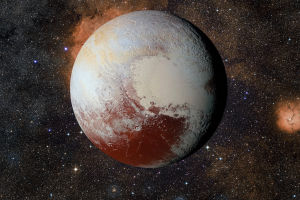The Milky Way, the beautiful and awe-inspiring galaxy that our planet belongs to, is disappearing from our view. Shockingly, one-third of the world's population can no longer observe the Milky Way on a clear night.
A recent study conducted by the Italian organization, GFZ (Science and Technology of Light Damage), published in the journal Science Advances, has attributed this phenomenon to light pollution.
The GFZ research team utilized the Suomi National Polar-orbiting Partnership satellite to capture images of the Earth at night.
This satellite is equipped with the ability to detect the intensity of any light source it can capture and mark its location.
By combining this with observations from over 20,000 ground stations worldwide, the team created an artificial night sky brightness atlas that covers cities and villages worldwide.
An artificial night sky is a term used to describe a phenomenon in which artificial light from below the atmosphere is reflected into and scattered within the atmosphere.
Excessive use of electric lighting is responsible for this phenomenon.
Artificial light sources shining directly or reflecting off the sky scatter light due to the presence of clouds, fog, and suspended particles in the atmosphere, thus lighting up the night sky and reducing the number of visible stars.
The problem of light pollution is becoming a "driving force" behind global warming. Lighting accounts for approximately two trillion kilowatt-hours of electricity consumed annually.
The production of this electricity emits more than one billion tonnes of carbon dioxide and over 10 million tonnes of sulphur dioxide. It is known that 50% of global warming is caused by CO2, so it is reasonable to infer that excessive lighting contributes to climate deterioration, even if there is no direct evidence to support this claim.
In addition, light pollution caused by excessive lighting affects the ecosystem. Animals in nature have their circadian rhythms, but light pollution interferes with their normal behavior. Artificial light attracts animals, and birds attracted by light can become disoriented and crash into the ground.
Light at night can disrupt plants that produce photosynthesis, halting their normal growth and development.
Many countries have taken legislative action to combat light pollution, recognizing the problems it causes in terms of human health, ecology, and energy consumption.
For instance, the Czech Republic has developed the "Protection of the Dark Environment Law" to prevent light pollution.
In the United States of America, California regulates the form of graded lighting areas, while the "Night Sky Protection Act" in New Mexico mandates that outdoor lighting should be installed with reasonable devices to prevent light pollution.
Fines are imposed on offenders who do not comply with the provisions.
In conclusion, light pollution is a problem that affects not only our view of the stars but also the environment and human health.
It is essential to raise awareness of this issue and take measures to minimize light pollution. If we do not take steps to curb it, we risk losing our connection with the natural world and the universe beyond our planet.


